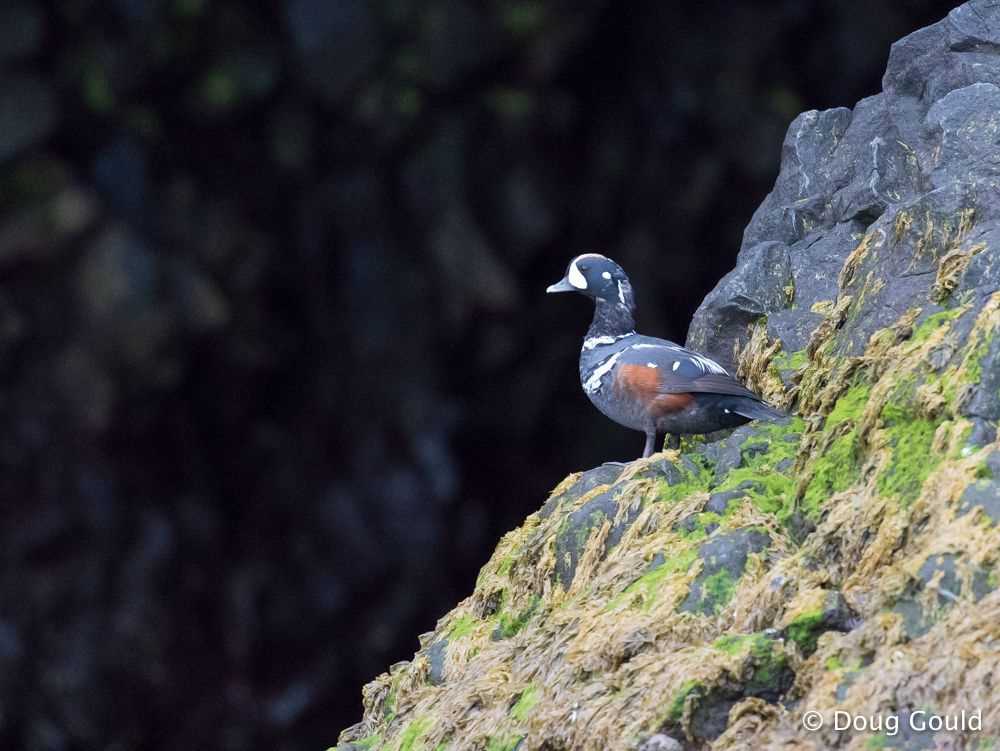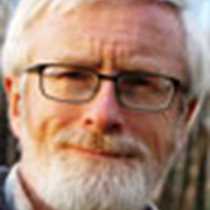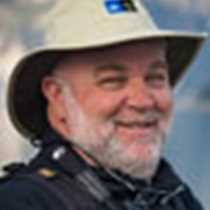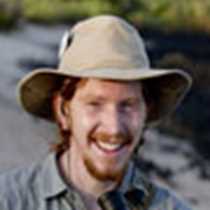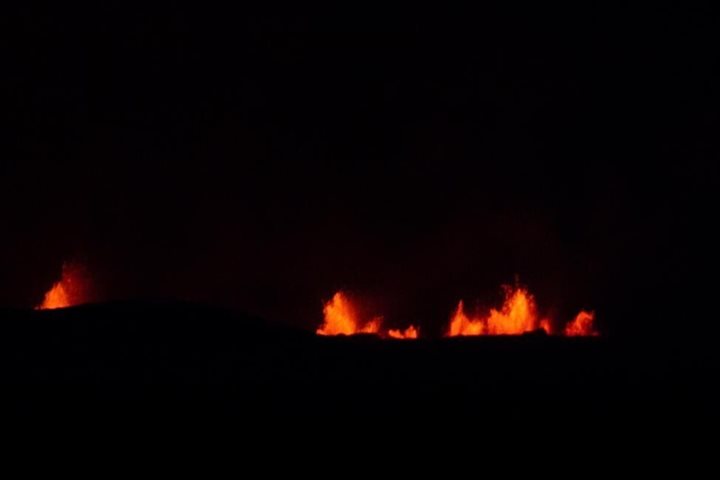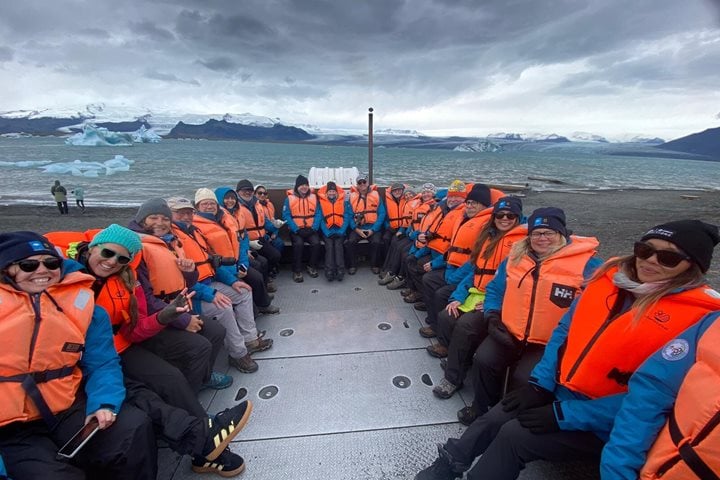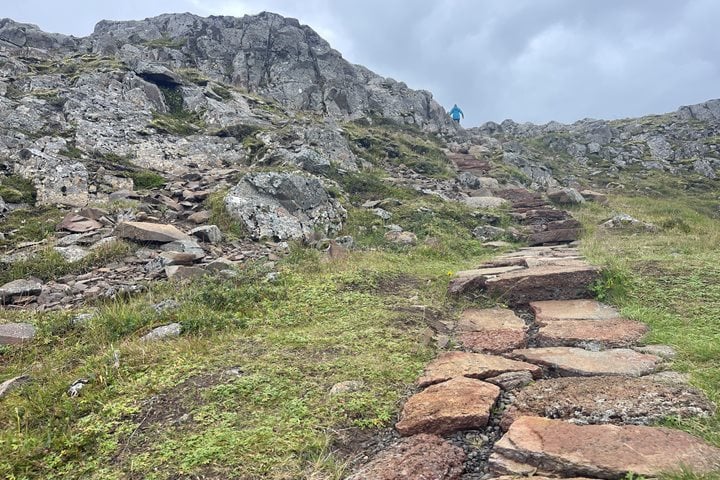Our day started with a quick rain shower while the Zodiacs were lowered into the sea near the Langanes peninsula in northeast Iceland. The first guests on the water were greeted by a rainbow but before we knew it, the rain had receded and the boats proceeded across glassy water to the black basalt cliffs bordering the bay. The cliffs themselves showed a great range of features including columns, caves, and deep cavities. Some covered ledges looked like the crypts of a medieval cathedral, but with puffins standing at the entrance rather than the icons of saints! Fulmars sailed by with their characteristic flap-flap-flap then glider flight, while black-legged kittiwakes kept aloft with buoyant wing strokes.
As we moved along the coastline, guests found themselves gazing at a sea stack that resembled a vertically exaggerated muffin. There was a grassy muffin-top that was holed by a multitude of puffin burrows, all (or seemingly all) guarded by their owners. After further inspection of rocky arches, sea caves, kelp forests, skeins of flying eider duck, and lots of other birds, we made our way back to the National Geographic Explorer.
As the vessel steamed ahead, guests settled into the Lounge to hear Hrund Gunnsteinsdóttir and Ragna Árnadóttir give a presentation called “Never Waste a Good Crisis”, which was about Iceland has flourished in the aftermath of the 2008 financial crash.
Meanwhile, a group of Young Explorers had a personalized tour of the ship. They saw places that the other guests hadn’t, including the kitchen, laundry room and the ‘doghouse’, which is where the Zodiacs and motors are maintained. They even got to see the dive room, where they were able to draw a breath from a scuba regulator.
The next presentation in the lounge was by renowned photographer Macduff Everton, who revealed the backstories behind National Geographic Magazine cover stories. But Macduff's talk was interrupted as a basking shark had been spotted on the starboard side of the ship. On a Lindblad Expedition, nature is always the real story! Basking sharks are the world's second largest fish and they often graze at the surface of the water with their mouth open, filtering the water for their plankton diet. This particular basking shark was very cooperative with the many photographers who lined the rail, repeatedly surfacing to show its dorsal fin, and often its tail fin as well.
At the end of the afternoon the presentations wrapped up with guest speaker David Helfand, a faculty member at Columbia University who lectures for the One Day University program. He talked about climate change and explained facts while also debunking common myths about global warming.
While guests enjoyed dinner, the National Geographic Explorer officially entered Arctic waters. We crossed the Arctic Circle and dropped anchor off Grímsey Island. This small island, which has a population of just 155, is the northernmost point of Iceland and is bisected by the Arctic Circle. We took Zodiacs to the island and then went by foot or shuttle bus to the part of the island where the Arctic Circle actually touches land. The Zodiac crossing was a little rough as the weather had turned windy but guests enjoyed getting their faces washed by the spray! A bit of adventure only makes for better sleep, which we all enjoyed after a long and eventful day.

